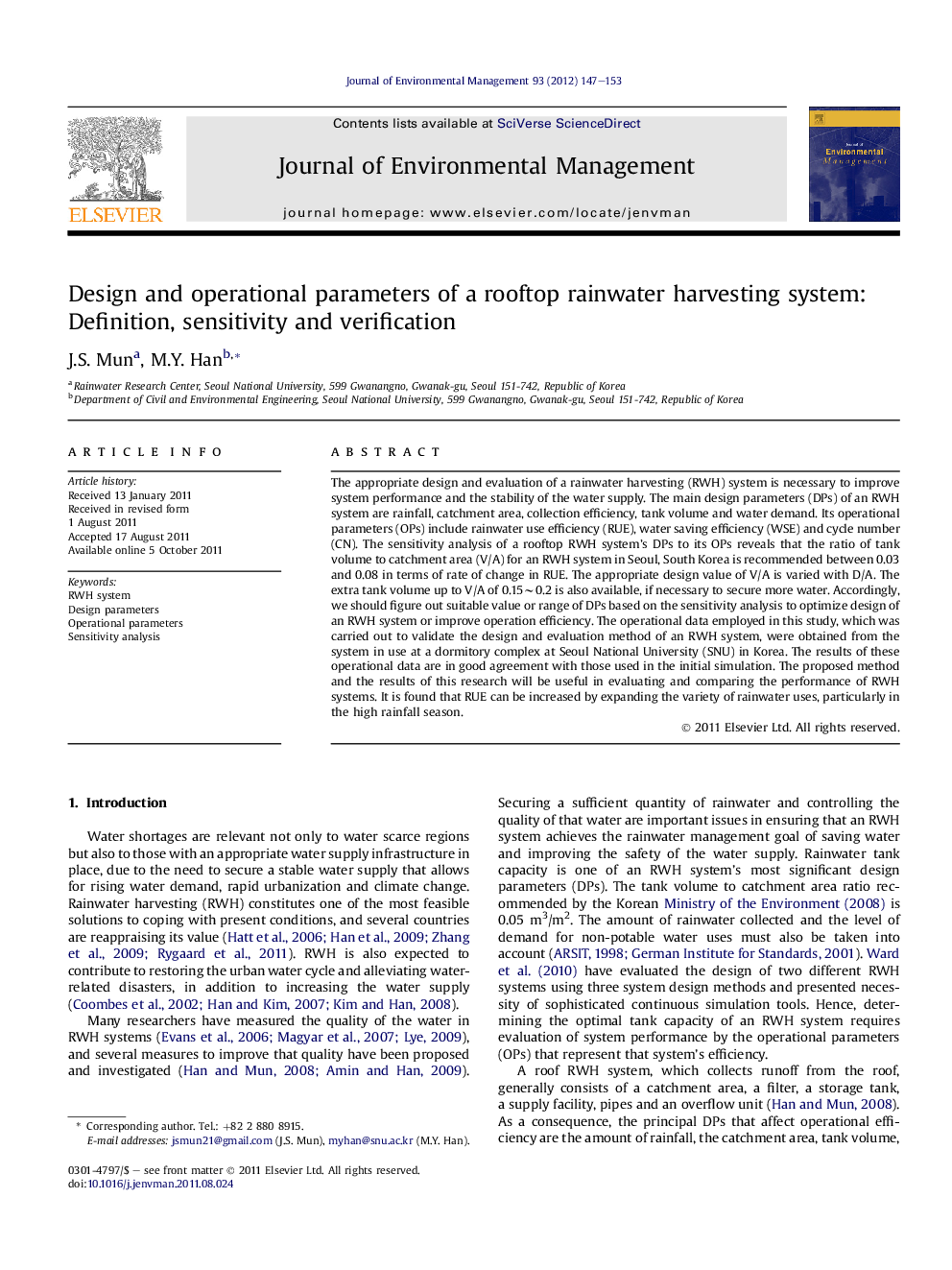| Article ID | Journal | Published Year | Pages | File Type |
|---|---|---|---|---|
| 1056976 | Journal of Environmental Management | 2012 | 7 Pages |
The appropriate design and evaluation of a rainwater harvesting (RWH) system is necessary to improve system performance and the stability of the water supply. The main design parameters (DPs) of an RWH system are rainfall, catchment area, collection efficiency, tank volume and water demand. Its operational parameters (OPs) include rainwater use efficiency (RUE), water saving efficiency (WSE) and cycle number (CN). The sensitivity analysis of a rooftop RWH system’s DPs to its OPs reveals that the ratio of tank volume to catchment area (V/A) for an RWH system in Seoul, South Korea is recommended between 0.03 and 0.08 in terms of rate of change in RUE. The appropriate design value of V/A is varied with D/A. The extra tank volume up to V/A of 0.15∼0.2 is also available, if necessary to secure more water. Accordingly, we should figure out suitable value or range of DPs based on the sensitivity analysis to optimize design of an RWH system or improve operation efficiency. The operational data employed in this study, which was carried out to validate the design and evaluation method of an RWH system, were obtained from the system in use at a dormitory complex at Seoul National University (SNU) in Korea. The results of these operational data are in good agreement with those used in the initial simulation. The proposed method and the results of this research will be useful in evaluating and comparing the performance of RWH systems. It is found that RUE can be increased by expanding the variety of rainwater uses, particularly in the high rainfall season.
► We define the design and operation parameters (DPs & OPs) for rainwater harvesting systems (RWHS). ► The sensitivity analysis of DPs to its OPs should be emphasized to design a rooftop RWHS. ► The appropriate range or value of DPs can be recommended based on sensitivity analysis. ► Case study reveals the effectiveness of a water-balance based simulation model on RWHS design.
